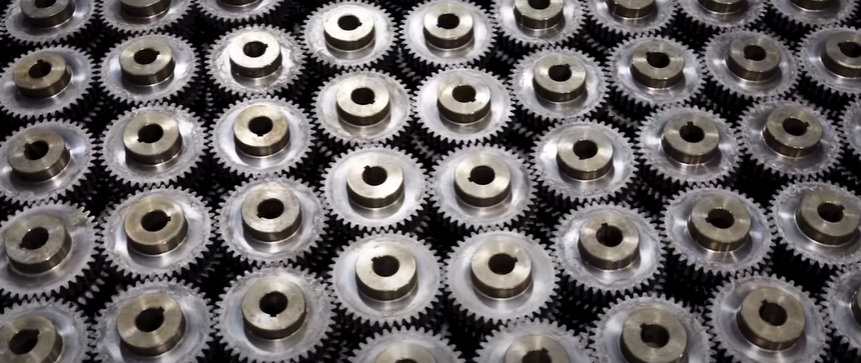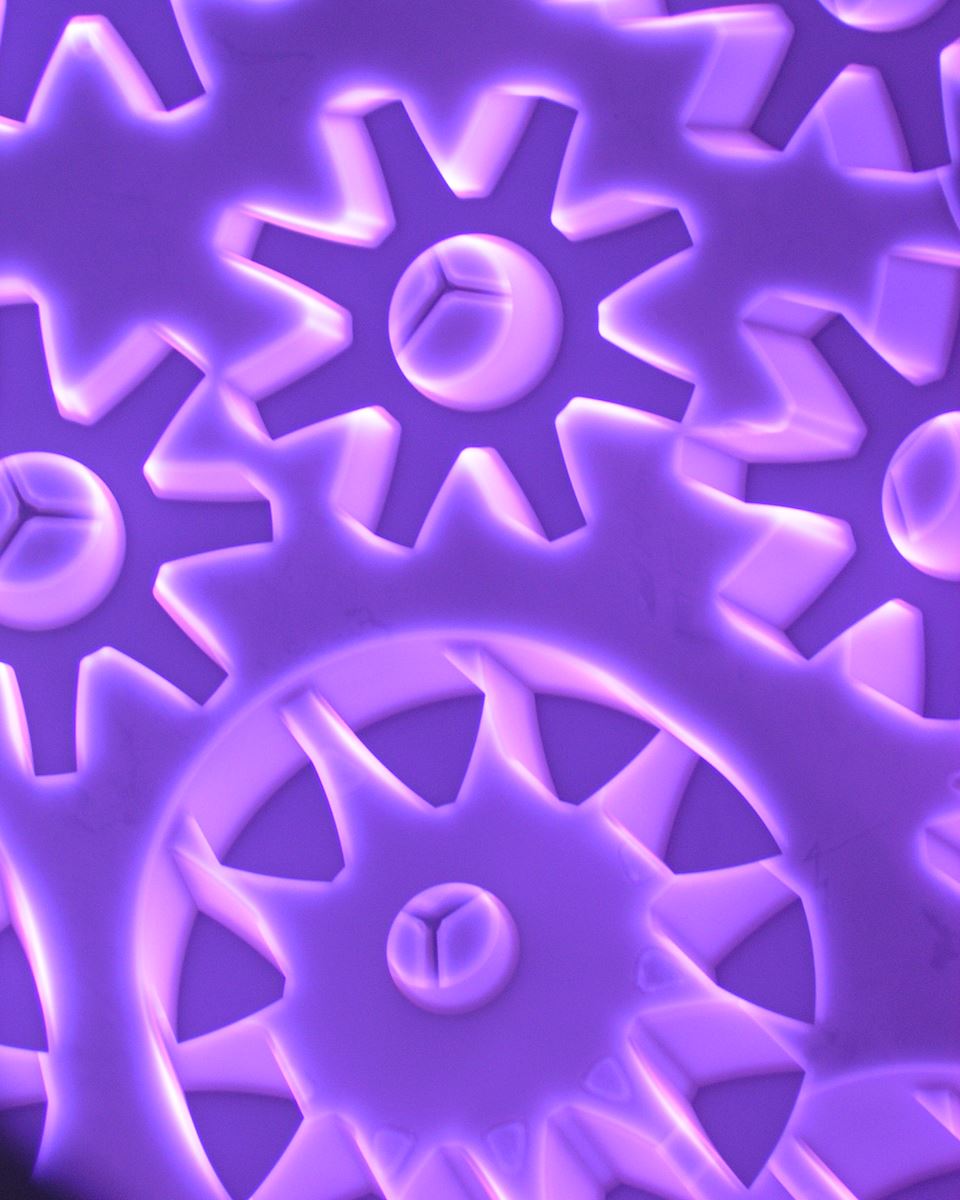Common Heat Treatments for Gears Offered By AHT
CARBURIZING THROUGH HARDENING INDUCTION HARDENING
CARBONITRIDINGULTRAGLOW GAS NITRIDING ULTRAGLOW ION NITRIDING
Advantages & Considerations by Heat Treat Type
When it comes to heat treating steel gears, you have several choices depending on alloys used, geometries, areas needing masked, case depth needed, price and more. Below we explain the benefits and limitations of each heat treatment. Please note that all case hardening treatments have the benefits of: increased wear & scuffing (scoring resistance); improved pitting resistance & bending strength and enhanced rolling contact fatigue resistance.
The below information is a general guide, benefits may vary based on alloy. Please talk to your AHT representative for more specific heat treating details.
Carburizing
Ideal for these applications/materials: Low Carbon Alloy Steels (4120, 4820, 8620, 9310, etc.)
Benefits for Gears: High wear resistance. Soft core for ductility. Deep case depth potential; High hardness (55+ HRC or equivalent); Improved durability
Considerations/Limitations: Post-grinding may be needed to meet size specifications; Offered only at our Burton Ave. location in Waterloo, Iowa
LEARN MORE ABOUT CARBURIZING
Through Hardening (Also known as “Quench & Temper”)
Ideal for these applications/materials: Medium to High Carbon Steels (1045, 1144, etc.); Medium Carbon Alloy Steels (4140, 4340, etc.); some Cast Irons (Ductile/Gray), Stainless Steels (400-series)
Generally used for gears that do not require high surface hardness.
Benefits: Controllable hardness range; Same hardness throughout the gear; Improved strength/lifespan of the gear
Considerations/Limitations: Too high of hardness throughout can lead to brittleness; Post-grinding may be needed to meet size specifications
Offered only at our Burton Ave. location in Waterloo, Iowa
LEARN MORE ABOUT THROUGH HARDENING
Induction Hardening
Ideal for these applications/materials: Medium to High Carbon & Alloy Steels, Some Cast Irons (Ductile/Gray)
 Benefits: Allows the use of lower cost alloys; Areas which require welding after heat treatment may be left soft (selective hardening); Deep case with tough core; Parts may be tempered after induction hardening to adjust hardness level as desired; Relatively little distortion
Benefits: Allows the use of lower cost alloys; Areas which require welding after heat treatment may be left soft (selective hardening); Deep case with tough core; Parts may be tempered after induction hardening to adjust hardness level as desired; Relatively little distortion
Considerations/Limitations: Geometry/size of the part; Offered at our Burton Ave. location in Waterloo, Iowa & Alabama
LEARN MORE ABOUT INDUCTION
Carbonitriding
Ideal for these applications/materials: Low Carbon Steels needing a Shallower Case; 1008, 1010, 1018, 1117, 12L14
Benefits: High surface hardness and tough core with low cost material; Diffusion of carbon results in a high carbon surface; Nitrogen provides extra hardness; Reduced distortion due to lower processing temps than carburizing
Considerations/Limitations: Not advisable to treat highly alloyed steels (stainless/tool steels); Offered only at our Burton Ave. location in Waterloo, Iowa
LEARN MORE ABOUT CARBONITRIDING
 Ion Nitriding
Ion Nitriding
Ideal for these applications/materials: Stainless Steels, Tool Steels, Powdered Metals, Medium Carbon Steels
Benefits: Creates consistent uniform nitride layer; Mechanical masking may be utilized (reusable); Environmentally-friendly process; Low to no part distortion or growth / Usually no need for post-nitride machining; Nadcap accredited at Waterloo, Iowa location (MidPort Blvd.)
Considerations/Limitations: Shallow case compared to traditional heat treat (carburizing, carbonitriding, etc.) / If machining after nitriding, surface properties may be compromised; Wide variety of case depth and surface hardness results depending on alloy used
LEARN MORE ABOUT ION NITRIDING
Gas Nitriding
Ideal for these applications/materials: Stainless Steels, Tool Steels, Medium Alloy Steels
Benefits: Achieves all-over treatment; Enhances surface lubricity of gear; Phase controllable compound zone (white layer); Low to no part distortion / Usually no need for post-nitriding machining; Nadcap accredited at Waterloo, Iowa location (MidPort Blvd.)
Considerations/Limitations: Not advised for powder metal components; Shallow case compared to traditional heat treat (carburizing, carbonitriding, etc.) / If machining after nitriding, surface properties may be compromised; Wide variety of case depth and surface hardness results depending on alloy used; Difficult and costly to mask areas from hardening treatment
LEARN MORE ABOUT GAS NITRIDING
View Articles Related to Heat Treating Gears Here.
LEARN MORE ABOUT HEAT TREATING GEARS